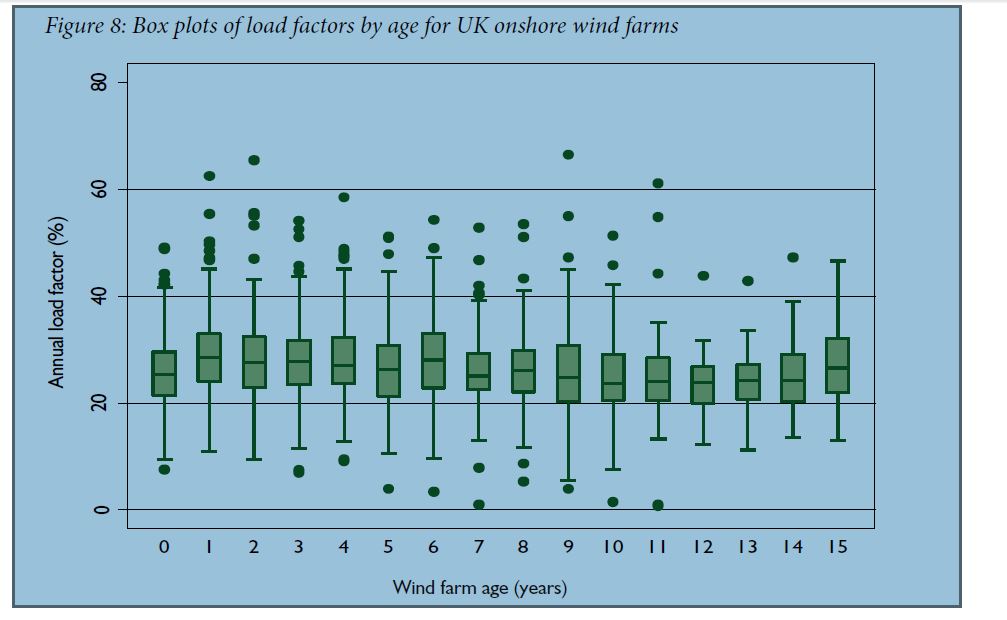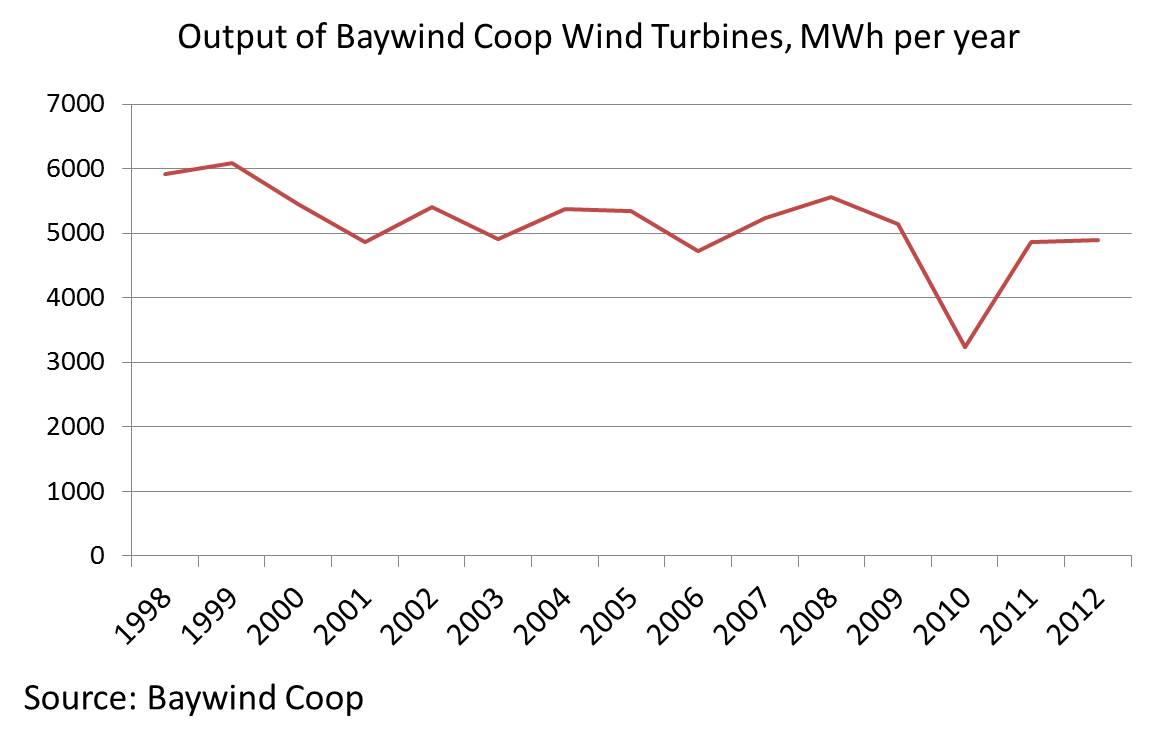Another nail in the coffin of econometrics: Gordon Hughes and the abuse of statistics
It was the proud boast of an econometrician I knew that he could ‘prove’ anything using statistics. He would have loved Gordon Hughes’ 2012 paper on the effect of age on the output of wind turbines. Hughes produced figures suggesting that the typical electricity generation of a UK onshore turbine falls sharply ever year of its life. He says the average load factor of a new wind farm starts at about 25% and is down to below 5% within scarcely more than a decade. Econometrician Hughes never seemed to talk to any operators of wind farms, who would have corrected his wild statistics. Nor did his paper actually provide us with the output figures from any individual turbines. Nevertheless, this didn’t stop his extraordinary analysis from getting substantial coverage. Yesterday Professor David MacKay, chief scientist at DECC, weighed in against Hughes’ conclusions. For those whose eyes start going round in circles when faced with equations like those in MacKay’s short article, let me provide one chart from Hughes’ paper which might help convince you that wind turbines don’t actually age faster than domestic cats.
In this chart, taken directly from the paper, Professor Hughes plots the average ‘capacity factor’ of turbines split by the age of the wind farm. (The ‘capacity factor’ is the percentage of the maximum output of a wind farm actually achieved in any year. For the UK onshore wind industry as a whole, capacity factor hover around 25-30%, depending on the strength of the winds in the year.)
The centre line in the middle of the green box is the average for the turbines of that age. The length of the box reflects the degree of variation between the wind farms in that group. You’ll notice that the average capacity factor doesn't actually fall as the age of each cohort of turbines increases. 15 year old wind farms do as well as farms in their first year. This inconvenient data didn’t stop Hughes. He went into overdrive to show that old turbines fall apart. And there’s always a statistical technique to enable you to do this. And very few people like David MacKay able to say quite how inappropriate that technique is.
Just so you can be sure that Hughes’ conclusion that onshore wind turbines lose 85% of their power in fifteen years, here are the generation figures from the Baywind Cooperative in Cumbria. Yes, the first full year produced more electricity than last year, but 1998 and 1999 were year of some of the highest wind speeds in the last two decades. By contrast, 2010 had probably the lowest wind speeds since the second World War. Take out these data points and you’d be hard pressed to show any decrease in output.
Wind turbines probably do deteriorate over time. They are very complicated mechanical devices undergoing huge mechanical stresses. But the decline is small, fairly predictable and nothing like as sharp as Professor Hughes says. Hughes' work demeans his profession.

